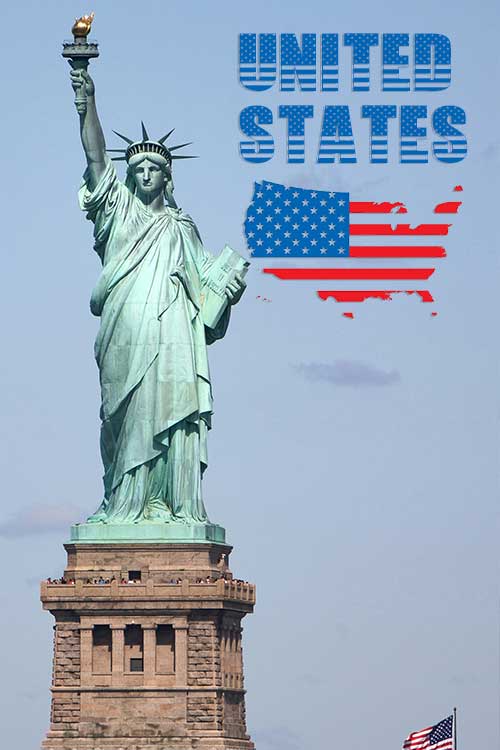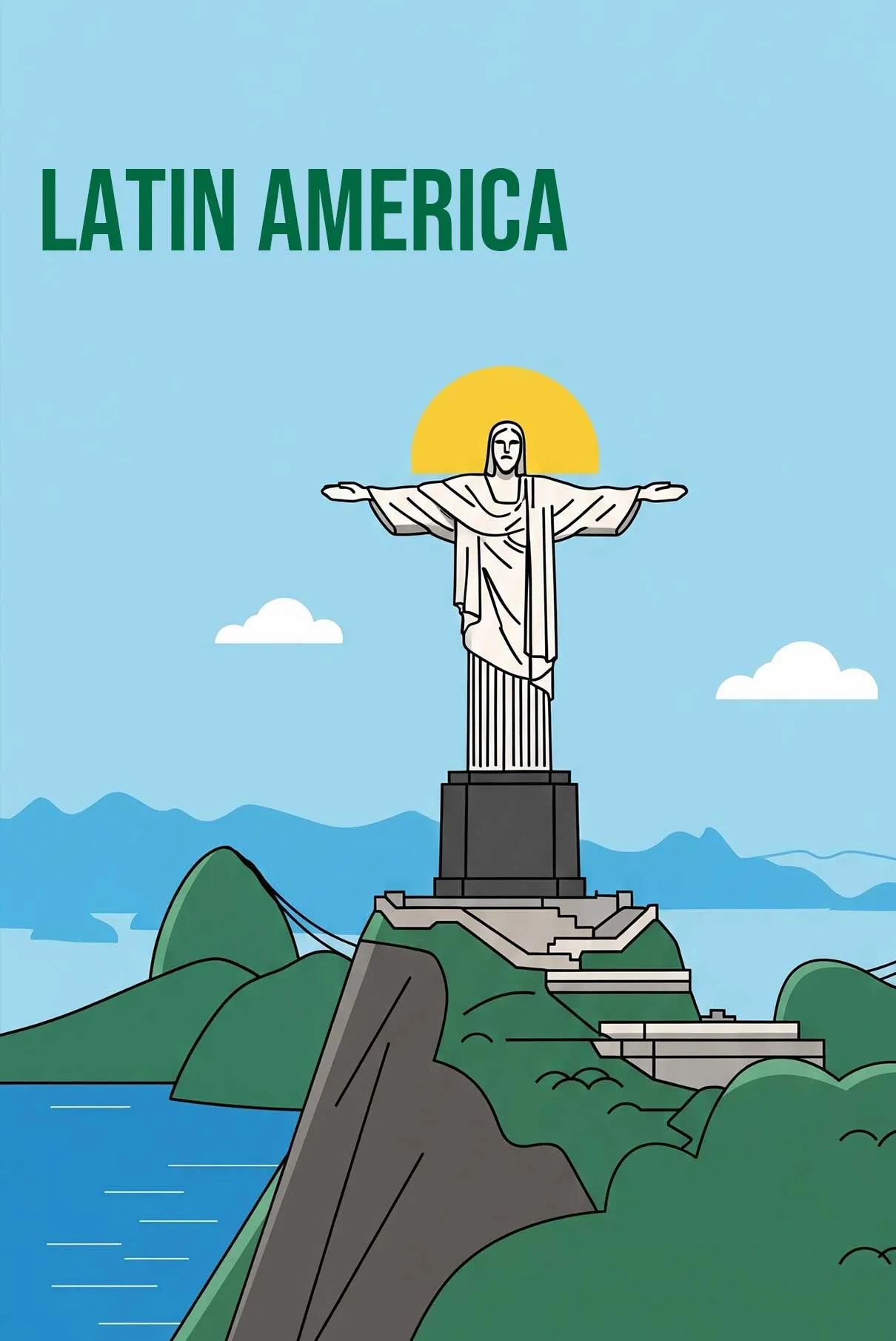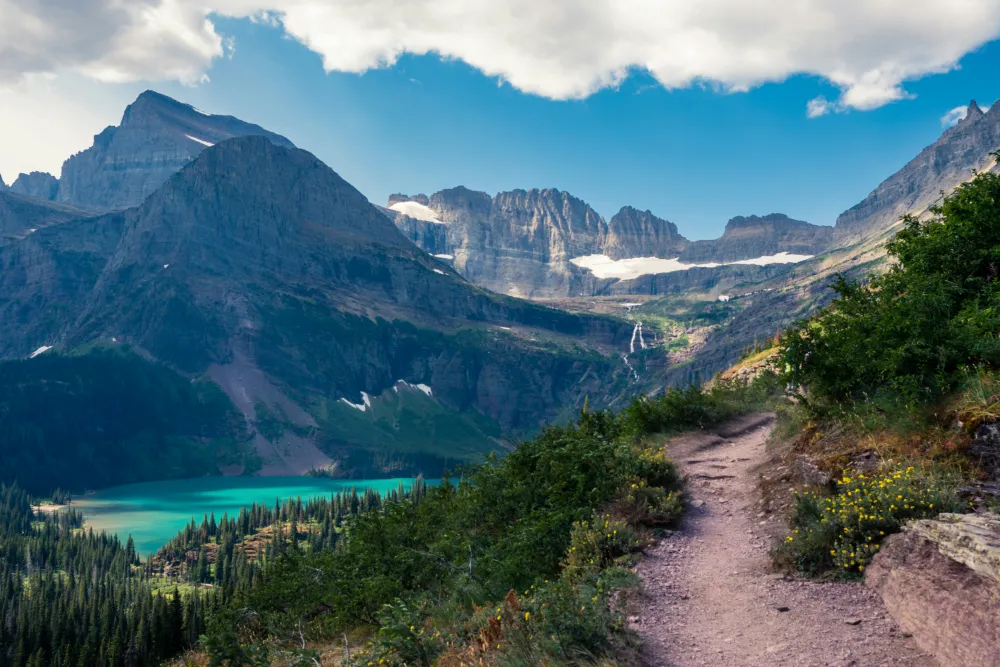Best Time To Visit
Best Time to Visit Glacier National Park: A Complete Seasonal & Activity Guide
Glacier National Park, often called the “Crown of the Continent,” captivates visitors with its dramatic alpine scenery, pristine lakes, remnant glaciers, and abundant wildlife.
Its soaring peaks, carved by ancient ice, cradle turquoise waters and wildflower-strewn meadows, offering unparalleled natural beauty. However, planning a trip to this majestic landscape requires careful consideration, as the optimal time to visit hinges significantly on individual priorities.
“When is the best time to visit Glacier National Park?”
The ideal period depends heavily on what one hopes to experience.
Factors such as the accessibility of the iconic Going-to-the-Sun Road (GTSR), prevailing weather conditions, tolerance for crowds, desired activities (from high-alpine hiking to scenic driving or whitewater rafting), and budget all play critical roles in determining the most suitable season.
The park’s northern latitude and mountainous terrain lead to highly variable weather and distinct seasonal characteristics, each offering unique opportunities and facing specific limitations.
This guide provides a comprehensive analysis of each season, detailing the trade-offs involved to help visitors choose their perfect time to explore Glacier National Park.
Quick Guide: Glacier National Park At-a-Glance by Season
Understanding the distinct character of each season is crucial for planning. The following table provides a snapshot comparison of typical conditions, access, and highlights throughout the year.
This overview allows for a quick assessment of which season might best align with primary travel goals before delving into more detailed descriptions.
| Feature | Spring (May-June) | Summer (July-August) | Fall (Sept-Oct) | Winter (Nov-April) |
|---|---|---|---|---|
| Typical Months | May – June | July – August | September – October | November – April |
| Avg Temp Range | Highs: 50s-70s °F<br>Lows: 30s-40s °F | Highs: 70s-80s °F<br>Lows: 40s-50s °F | Highs: 50s-60s °F (Sept), 40s-50s °F (Oct)<br>Lows: 30s-40s °F | Highs: 20s-30s °F<br>Lows: 10s-20s °F |
| Crowd Level | Low to Moderate | Peak / Very High | Moderate (Sept) to Low (Oct) | Very Low |
| GTSR Status | Closed, then Partial Vehicle Access, Bike Access Only on plowed sections | Typically Fully Open (by early/mid-July) | Fully Open (early Sept), then Partial/Closing (late Sept/Oct) | Closed to Vehicles |
| Key Activities | GTSR Biking, Whitewater Rafting, Waterfalls, Low Elevation Hiking | Driving GTSR, Hiking (all elevations), Swimming, Boating, Ranger Programs | Hiking, Wildlife Viewing, Fall Foliage (Larches in Oct), Photography, Fishing | Snowshoeing, Cross-Country Skiing, Solitude |
| Pros | Fewer Crowds, Unique Activities (Biking/Rafting), Waterfalls, Greening Landscape | Full Park Access, Best Weather, Wildflowers, All Services Open, Long Days | Fewer Crowds (esp. post-Labor Day), Fall Colors, Active Wildlife, Pleasant Temps (early Sept) | Solitude, Snow Activities, Lower Costs, Winter Scenery |
| Cons | Unpredictable Weather, Limited High Trail Access (Snow), Limited Services, Uncertain GTSR Vehicle Access | Peak Crowds, Booking Challenges, Higher Prices, Potential Wildfire Smoke (esp. Aug) | Variable Weather (Snow possible), Closing Services/Roads (esp. Oct), Smoke Risk (early Sept), Shorter Days | Extreme Cold, Very Limited Access & Services, Requires Winter Preparedness |
Note: Conditions, especially GTSR opening/closing dates, vary significantly year to year based on snowfall. Always check the official National Park Service (NPS) website for current status before visiting.
This “Invisible” SIM Card is Saving Ordinary Travellers Hundreds on International Trips
You see those travelers glide through airport arrivals – calm, internet connected, already booking their ride-share while others are frantically searching for Wi-Fi or queuing at chaotic phone kiosks…
What’s their secret?
When you travel overseas you’re either paying insanely high data-roaming fees from your home carrier or frantically hunting down some local SIM card kiosk the second you land, wasting precious vacation time just trying to get your phone working.
One leaves you with a bill that leaves a sour taste in your mouth after a great trip. The other eats into your actual holiday, causing stress and hassle when you should be exploring.
But what if I told you that ordinary travelers just like you have figured out a way to completely bypass this frustrating experience?
They’re using something most travelers don’t even know exists… a kind of “invisible” SIM card technology that you likely already have on your phone right now.
And it’s allowing them to tap into super-cheap, high-speed data anywhere in the world… without swapping cards, without visiting a store, and without getting ripped off.
It’s called an eSIM.
And eSIM4.com makes getting one simple.
Here’s how it works:
- Step 1: Go to eSIM4.com.
- Step 2: You pick your destination, choose a data plan.
- Step 3: We send you a simple QR code. You scan it with your phone’s camera.
Your new travel SIM is installed in under 3 minutes!
The moment your plane’s wheels hit the tarmac overseas? Your phone instantly connects to a fast, local network.
No queues. No fumbling with tiny plastic chips. No nasty bill shock.
Just seamless, affordable data letting you use Google Maps, WhatsApp, Uber, Instagram… whatever you need… right away.
This is how travel is supposed to work. And it’s saving people like you hundreds of dollars on a single trip.
Stop letting the big phone companies treat your travel budget like their personal ATM. Stop wasting your valuable vacation time being disconnected or stressed.
Join the smart travelers who’ve already made the switch.
CLICK HERE TO GET STARTEDPeak Perfection & Peak Crowds: Visiting in Summer (July-August)
For many visitors, particularly those coming for the first time or families tied to school schedules, summer represents the quintessential Glacier National Park experience. July and August offer the most reliable warm weather, the longest daylight hours for exploration, and typically, full access to the park’s vast network of roads and trails, including the famed Going-to-the-Sun Road.
Advantages of a Summer Visit:
- Full Going-to-the-Sun Road Access: The entire 50-plus mile length of the GTSR is usually fully open to vehicles by early to mid-July, allowing for the iconic drive across the Continental Divide at Logan Pass. This provides access to trailheads for popular high-elevation hikes. However, the exact opening date varies annually depending on snowpack removal efforts; in heavy snow years, it has opened as late as mid-July.
- Optimal Weather Conditions: These months boast the warmest temperatures, often reaching the low 80s Fahrenheit in lower elevations like West Glacier, making conditions ideal for hiking, backpacking, and water activities. Lakes like Lake McDonald become relatively pleasant for swimming, kayaking, or paddleboarding.
- Peak Wildflower Displays: The alpine meadows burst into color, particularly from mid-July through mid-August. Areas like Logan Pass become carpets of yellow glacier lilies, purple asters, and pink monkeyflowers, offering spectacular photographic opportunities.
- All Facilities Operational: Visitor centers, ranger stations, lodges within the park, campgrounds, shuttle services, and boat tours are typically fully operational during these months, providing maximum convenience and support.
- Extended Daylight: Long summer days allow visitors to pack more activities into their schedule, with sunlight often lasting well into the evening.
Disadvantages of a Summer Visit:
- Maximum Crowds: This period sees the highest concentration of visitors, with over half of the park’s annual visitation occurring in July and August. Expect significant congestion on the GTSR, extremely limited parking at popular trailheads (often filling before 7 or 8 AM), crowded trails, and potential waits for shuttles. Logan Pass and Lake McDonald areas are particularly impacted.
- Booking Challenges: Demand for lodging inside the park and in nearby gateway towns is extremely high. Reservations often need to be made many months, sometimes even a year, in advance. Vehicle reservations may also be required for accessing certain park areas during peak hours.
- Premium Pricing: High demand translates to peak season prices for flights, rental cars, and accommodations.
- Wildfire Smoke Risk: Late summer, especially August, carries an increased risk of wildfire smoke drifting in from regional fires or, occasionally, fires within the park itself. This can significantly impact air quality and obscure the park’s famous vistas.
Who Should Visit in Summer?
Summer is often the best choice for first-time visitors who prioritize experiencing the entire Going-to-the-Sun Road and accessing high-elevation trails like the Highline Trail. It’s also the most practical season for families limited by school holidays.
Navigating Peak Season:
Success during summer requires strategic planning. Arrive at popular destinations like Logan Pass or Avalanche Lake extremely early (well before 8 AM, ideally closer to sunrise).
Consider visiting mid-week rather than on weekends. Utilize the park’s free shuttle system along the GTSR, but be prepared for potential wait times.
Always have alternative plans; if one area is overwhelmed, pivot to a less-crowded region like Two Medicine or the North Fork (check access requirements).
Despite being the most logistically straightforward time with everything open, the sheer volume of people necessitates proactive measures to mitigate the impact of crowds.
The possibility of smoke, particularly in August, should also be factored into expectations.
The Shoulder Season Advantage: Finding Balance (May, June, September, October)
For visitors seeking to avoid the peak summer rush while still enjoying many of Glacier’s splendors, the shoulder seasons – spring (May-June) and fall (September-October) – offer compelling alternatives.
These periods present unique opportunities, fewer people, and often lower costs, but they also demand greater flexibility and preparedness for variable conditions and potentially limited access.
It’s crucial to understand that “shoulder season” encompasses distinct experiences; early spring differs significantly from late fall.
Therefore, breaking down this period into “Early Shoulder” and “Late Shoulder” provides a clearer picture of the specific trade-offs involved.
Early Shoulder – Spring Awakening (May & June)
Spring in Glacier is a time of dramatic transition, characterized by melting snow, roaring waterfalls, emerging greenery, and unique recreational opportunities before the full onset of summer tourism.
Why Visit in May?
May offers a taste of Glacier’s awakening. Lower elevation trails, particularly on the park’s edges and west side, begin to shed their snow cover by mid-to-late May, allowing for early-season hiking.
The park experiences profound quietness compared to summer. Snowmelt fuels spectacular waterfall displays throughout the park, many visible even from accessible roads.
For thrill-seekers, May often marks the beginning of the whitewater rafting season on the Middle Fork of the Flathead River, when spring runoff creates the most exciting rapids of the year.
Perhaps most uniquely, as plowing operations progress on the GTSR, sections become accessible for biking before the road opens to vehicles, offering an unparalleled, car-free cycling experience.
Why Visit in June?
June builds upon May’s momentum. Biking access on the GTSR typically extends to higher elevations as plowing continues, potentially reaching Logan Pass in mid-to-late June before the road opens fully to cars – a coveted, though short-lived, opportunity. Whitewater rafting remains excellent, often with powerful flows continuing into mid-June.
The landscape becomes increasingly verdant, and early wildflowers start appearing at lower elevations. While still less crowded than July, visitor numbers begin to increase. The possibility of the GTSR opening fully to vehicles emerges, usually in mid-to-late June, though this is highly variable.
Considerations for Early Shoulder Visits:
- Weather Variability: Spring weather is notoriously unpredictable, with potential for rain, sun, and even significant snowfall at higher elevations. Layering clothing is essential.
- Limited Trail Access: While lower elevation trails become accessible, most high-elevation routes remain snow-covered and impassable until July. Visitors planning extensive high-country hiking should aim for later in the summer.
- Reduced Services: Many park lodges, campgrounds, and visitor facilities operate on limited schedules or remain closed until late May or June. Visitors need to be more self-sufficient.
- Uncertain GTSR Vehicle Access: Driving the full length of the GTSR is unlikely in May and depends on annual plowing progress in June. Check the NPS website frequently for updates.
Who Should Visit in Early Shoulder?
This period is ideal for avid cyclists eager for the unique GTSR biking experience, whitewater rafting enthusiasts seeking peak flows, visitors prioritizing solitude and powerful waterfalls over high-alpine access, and potentially budget-conscious travelers finding better deals before peak season.
It requires an acceptance of uncertainty regarding road and trail access.
Late Shoulder – Autumn’s Glow & Quieter Trails (September & October)
Autumn transforms Glacier with vibrant colors, increased wildlife activity, and a welcome reduction in crowds, offering a different kind of magic compared to summer’s peak.
Why Visit in September?
September, particularly the period right after Labor Day until the end of the month, is frequently cited by locals and repeat visitors as the “sweet spot” for visiting Glacier. This timeframe often strikes an ideal balance: the weather typically remains pleasant with crisp, sunny days, though mornings can be chilly.
Critically, the Going-to-the-Sun Road usually remains fully open until late September or early October, allowing access to Logan Pass and high-elevation trailheads. Summer crowds diminish significantly after Labor Day, leading to quieter trails and less competition for parking.
Fall colors begin to appear mid-month as aspens and cottonwoods turn yellow. Wildlife, including deer, elk, moose, and bears, becomes more active and visible as they forage in preparation for winter and crowds thin.
Most hiking trails remain snow-free and accessible.
Why Visit in October?
October offers the peak of fall color, specifically the dramatic transformation of the Western Larch (Tamarack). These unique deciduous conifers turn a brilliant golden-yellow, typically peaking in mid-October, dotting the mountainsides with stunning color.
This period provides maximum solitude on hiking trails as visitor numbers drop further. The park takes on a moody, atmospheric quality, appealing to photographers. Lower elevation hiking remains viable, and fly fishing on the rivers can be excellent as waters cool.
Considerations for Late Shoulder Visits:
- Increasingly Unpredictable Weather: While September can be lovely, the risk of inclement weather, including early snowstorms, increases significantly as the season progresses into October, especially at higher elevations.
- Service and Road Closures: Park services, including lodges, restaurants, and some ranger stations, begin closing in mid-September, with most shuttered by the end of the month or early October. The GTSR typically begins closing sections in late September, with full closure over Logan Pass usually occurring by mid-October, dictated by snowfall.
- Wildfire Smoke Potential: While the risk may decrease compared to August, wildfire smoke can still be a factor, particularly in early September. Check air quality reports.
- Shorter Daylight Hours: Days become noticeably shorter, reducing available time for long hikes or extensive exploration compared to summer.
Who Should Visit in Late Shoulder?
September appeals to visitors seeking a balance of good access (including GTSR) and significantly fewer crowds than summer, along with pleasant weather and active wildlife.
October is best suited for those prioritizing peak fall larch colors and solitude, photographers embracing atmospheric conditions, and hikers comfortable with variable weather and focusing on lower to mid-elevation trails, understanding that services and GTSR access will be limited. This period often attracts return visitors seeking a different park experience.
The distinction between early September’s near-summer conditions with fewer people and October’s focus on larch colors amidst closing facilities is key to managing expectations.
Winter Wonderland & Solitude: Visiting in the Off-Season (November – April)
Winter transforms Glacier National Park into a quiet, snow-draped landscape offering profound solitude and opportunities for specialized recreation.
Visiting during this period (roughly November through April) is a vastly different experience from the other seasons, requiring significant preparation and an acceptance of limited access.
Advantages of a Winter Visit:
- Ultimate Solitude: This is the least crowded time by far, offering a chance to experience the park’s immense silence and beauty without the presence of summer masses. Most visitors are locals or those specifically seeking winter conditions.
- Snow-Based Recreation: The Apgar Village area and lower sections of the closed Going-to-the-Sun and Camas Roads become prime locations for cross-country skiing and snowshoeing through stunning winter scenery. Exploring these areas under a blanket of snow can be magical.
- Dramatic Winter Scenery: The snow-covered peaks and frozen landscapes offer unique and dramatic photographic opportunities.
- Lower Costs: Park entrance fees are reduced during the winter months (November 1 to April 30). Accommodation costs in nearby towns like Whitefish may also be lower, although Whitefish itself is a popular winter ski destination.
- Northern Lights Potential: While challenging and requiring luck, there is a possibility of viewing the aurora borealis, particularly between January and March on clear, dark nights.
Disadvantages of a Winter Visit:
- Extreme Weather Conditions: Visitors must be prepared for very cold temperatures, heavy snowfall, and the potential for blizzards and rapidly changing conditions. Proper winter gear is essential.
- Severely Limited Access: Most park roads, including the entirety of the Going-to-the-Sun Road beyond Lake McDonald Lodge on the west and St. Mary on the east, are closed to vehicle traffic due to snow. Access is generally limited to the Apgar and Lake McDonald areas on the west side.
- Minimal Services: Nearly all park facilities, including lodges, restaurants, and most visitor centers, are closed. The Apgar Visitor Center typically remains open only on weekends. There are very limited services available within the park boundaries.
- Requires Self-Sufficiency and Preparation: Visitors must be almost entirely self-sufficient, carrying appropriate gear, food, water, and navigation tools. Knowledge of avalanche safety is crucial for anyone venturing beyond maintained areas or onto steeper slopes.
Who Should Visit in Winter?
Winter in Glacier is best suited for experienced winter recreationists comfortable with self-sufficiency in challenging conditions, individuals seeking extreme solitude and quiet beauty, and photographers equipped for cold-weather shooting. It is generally not recommended for first-time visitors or those unprepared for the demands and limitations of the season.
It’s less a typical tourist season and more a specialized wilderness experience.
Best Time Based on Your Priorities & Activities
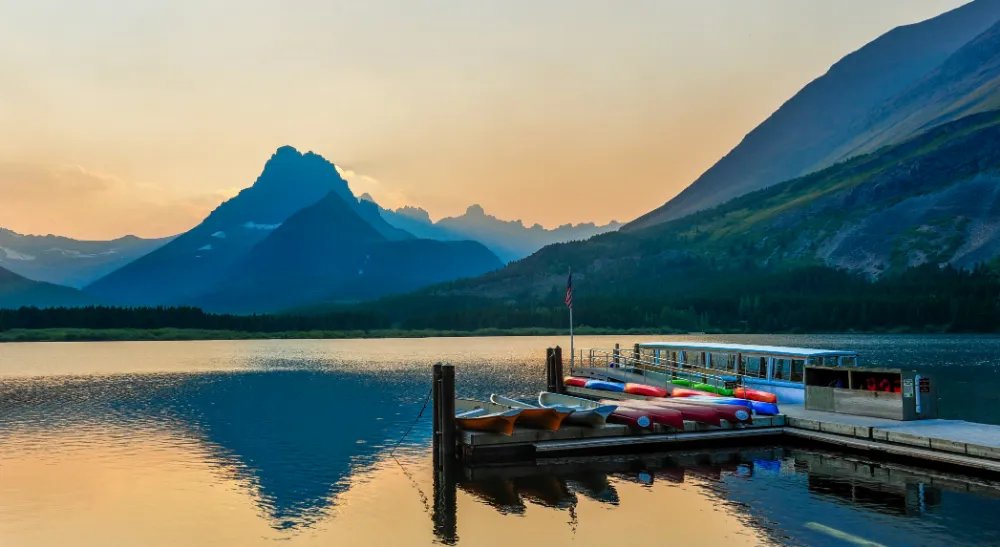
Choosing the “best” time ultimately comes down to aligning the park’s seasonal offerings with personal preferences and goals. Here’s a summary based on common priorities:
- Best for Avoiding Crowds: Late September and October offer the most significant reduction in crowds while retaining some access. May provides solitude but with limited high-country access. Winter (November-April) guarantees the fewest people but comes with major access restrictions and challenging conditions. Even September can still feel busy in popular spots compared to true off-season.
- Best for Good Weather: July and August provide the warmest and generally sunniest conditions, ideal for hiking and lake activities. Early September often continues this trend with pleasant, cooler days. However, mountain weather is always unpredictable.
- Best for Driving the Going-to-the-Sun Road: The window for driving the entire road typically runs from late June or early July through late September or early October. July and August offer the highest certainty of it being fully open, while September provides the full drive with fewer crowds. Always verify current status with NPS, as dates vary yearly.
- Best for Hiking:
- High Elevation Trails (e.g., Highline, Grinnell Glacier): Mid-July through mid-September is the prime window when these trails are most likely to be snow-free and fully accessible.
- Lower Elevation Trails: These are enjoyable from May through October. Spring (May-June) offers lush scenery and waterfalls, while Fall (September-October) provides cooler temperatures, fall colors, and fewer people.
- Best for Wildlife Viewing: Fall (September-October) is frequently highlighted as an excellent time. Animals are more active preparing for winter (bears foraging, ungulates in rut), and thinning crowds mean less disturbance. Spring is also productive as animals emerge from winter. While wildlife can be seen in summer, heat and crowds may make sightings less frequent or predictable.
- Best for Photography:
- Waterfalls: May and June, when snowmelt is at its peak.
- Wildflowers: Late June through mid-August, especially in alpine meadows like Logan Pass.
- Fall Colors (Larches): Mid-October offers the unique golden spectacle of the Tamarack trees. Aspens and cottonwoods provide color starting mid-September.
- Wildlife: Fall (September-October) often provides the best opportunities.
- Snowscapes & Northern Lights: Winter (November-March) for dramatic snow scenes and a chance (though not guaranteed) of aurora borealis.
- Best for Specific Activities:
- Biking GTSR (Car-Free): Late May through mid/late June, depending on annual plowing progress.
- Whitewater Rafting: May and early June for the most thrilling, high-water rapids; July and August for warmer, family-friendly Class II-III trips.
- Fly Fishing: Fall is often preferred due to cooler water temperatures and less crowded rivers.
- Swimming & Lake Activities: July and August offer the warmest water temperatures, particularly in lower elevation lakes like Lake McDonald.
- Best for Lower Costs: The shoulder seasons (May, late September, October) and especially Winter (November-April) generally see lower demand for flights and lodging outside the park compared to peak summer. Winter also features reduced park entrance fees.
Planning Your Visit: Essential Tips Regardless of Season
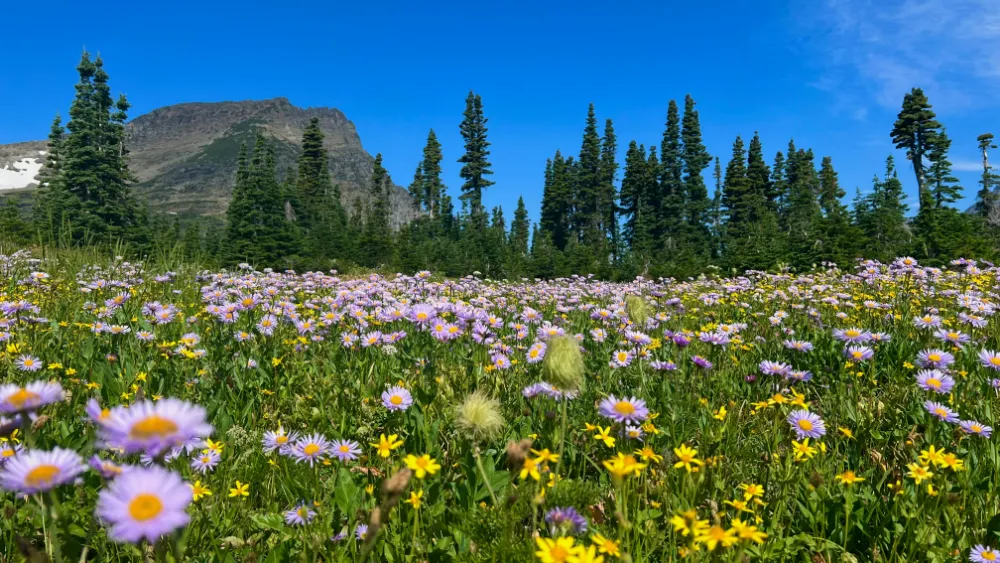
Successful trips to Glacier National Park require planning and preparation, no matter when the visit occurs. The park’s scale, popularity, and dynamic environment necessitate attention to detail.
- Check Current Conditions Constantly: Before and during a visit, regularly consult the official National Park Service (NPS) Glacier website (nps.gov/glac). This is the most reliable source for real-time updates crucial for planning:
- Road Status: Especially the opening, closing, and any temporary restrictions on the Going-to-the-Sun Road and other park roads.
- Trail Conditions: Information on snow levels, closures due to bear activity, or other hazards.
- Weather Forecasts: Understand that weather can change rapidly and differ significantly between the west and east sides of the park and at various elevations.
- Webcams: Provide a visual check of conditions in different park areas.
- Air Quality: Particularly important during late summer and early fall due to potential wildfire smoke.
- Secure Reservations and Permits Well in Advance: Due to high demand, especially in summer and early fall, advance planning is critical:
- Vehicle Reservations: Check the NPS website for current requirements. In recent years, timed-entry vehicle reservations have been necessary to access the GTSR corridor, North Fork, Many Glacier, and Two Medicine areas during peak season and hours. These often become available months in advance and sell out quickly.
- Lodging: In-park lodging and accommodations in popular gateway towns (West Glacier, St. Mary, Whitefish) should be booked many months, even up to a year, ahead, especially for summer.
- Backcountry Permits: Required for overnight backpacking trips and are highly competitive.
- Pack Appropriately for Variable Conditions: Layering clothing is key in Glacier, regardless of the season. Be prepared for sun, rain, wind, and potentially cold temperatures, even in summer, especially at higher elevations. Essential items include:
- Multiple layers (base, insulating, waterproof/windproof outer shell)
- Rain gear (jacket and pants)
- Sun protection (hat, sunglasses, sunscreen)
- Bear spray (know how to use it and carry it accessibly)
- Sturdy, broken-in hiking footwear
- Plenty of water and high-energy snacks
- Navigation tools (map, compass/GPS device, especially if hiking)
- Allocate Sufficient Time: To adequately experience multiple areas of the park and undertake several hikes, plan for a minimum stay of three to five days. Shorter trips are possible but will limit exploration significantly. Winter visits might focus on shorter day trips unless equipped for winter camping or backcountry skiing.
- Employ Crowd Management Strategies: During busy periods (primarily July, August, and early September), actively work to mitigate the impact of crowds: arrive at popular trailheads and viewpoints very early (before 7 AM) or later in the afternoon. Visit mid-week if possible. Utilize the park shuttle system along the GTSR but factor in potential wait times. Maintain flexibility; if a planned destination is overwhelmed, switch to a less-visited area. Patience is essential.
- Explore Beyond the Going-to-the-Sun Road: While GTSR is spectacular, it’s not the only highlight. Dedicate time to explore other diverse regions like the Many Glacier valley (known for hiking and wildlife), Two Medicine (quieter, historic area), the North Fork (rustic, unpaved roads, Polebridge Mercantile), and the Lake McDonald area (largest lake, west side hub). Exploring these areas can provide a richer experience and potential refuge from GTSR crowds, especially during shoulder seasons when parts of the main road may be closed.
Determining the “best” time to visit Glacier National Park is inherently subjective, a calculation based on balancing personal priorities against the park’s seasonal realities. There is no single month or season that universally surpasses all others; each holds distinct advantages and disadvantages.
Summer (July-August) offers the highest likelihood of good weather and full access to nearly all park roads and trails, including the entire Going-to-the-Sun Road, making it ideal for first-time visitors wanting the classic experience. However, this comes at the cost of significant crowds, booking challenges, and potential wildfire smoke.
The shoulder seasons provide compelling alternatives.
Spring (May-June) unlocks unique activities like car-free biking on sections of the GTSR and peak whitewater rafting amidst awakening landscapes and powerful waterfalls, albeit with unpredictable weather and limited high-country access.
Autumn (September-October) presents a sought-after balance, particularly in early-to-mid September, which often combines pleasant weather, open roads, active wildlife, and substantially fewer crowds than summer. Late October offers peak larch colors and maximum solitude but with diminishing services and increasing weather uncertainty.
Winter (November-April) transforms Glacier into a quiet, snow-covered realm perfect for solitude-seekers and prepared winter recreationists, but access and services are severely limited, demanding self-sufficiency and tolerance for extreme conditions.
Ultimately, the optimal visit depends on weighing the desire for full access and warm weather against tolerance for crowds, or prioritizing unique activities and solitude while accepting potential limitations in access and services.
By understanding these seasonal trade-offs and planning accordingly – checking conditions diligently, booking accommodations and necessary reservations well in advance, packing appropriately, and maintaining flexibility – visitors can ensure an incredible and rewarding experience in the Crown of the Continent, regardless of the time of year chosen.




